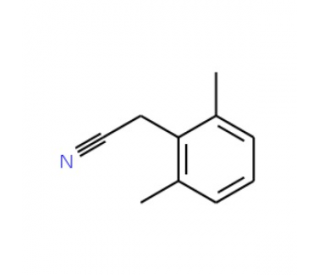详细说明
Purity
>95%, by SDS-PAGE under reducing conditions and visualized by Colloidal Coomassie® Blue stain
Activity
Recombinant Human SUMO1 can be conjugated to substrate proteins via the subsequent actions of an SUMO-activating (E1) enzyme, an SUMO-conjugating (E2) enzyme, and an SUMO ligase (E3). Reaction conditions will need to be optimized for each specific application. We recommend an initial Recombinant Human SUMO1 concentration of 10-50 μM.
Source
E. coli-derived
Accession #
Predicted Molecular Mass
11 kDa
UL-712 |
| |
Formulation Supplied as a solution in HEPES, NaCl and DTT. | ||
Shipping The product is shipped with dry ice or equivalent. Upon receipt, store it immediately at the temperature recommended below. | ||
Stability & Storage: Use a manual defrost freezer and avoid repeated freeze-thaw cycles.
|
Background: SUMO1
Human Small Ubiquitin-like Modifier 1 (SUMO1), also known as Sentrin, UBL1, and SMT3C, is synthesized as a 101 amino acid (aa) propeptide with a predicted molecular weight of 11.5 kDa. Human SUMO1 is the most unique of the four identified SUMO proteins and shares only 44%, 47%, and 41% aa sequence identity with SUMO2, SUMO3, and SUMO4, respectively. In contrast, human SUMO1 shares 100% aa sequence identity with the mouse ortholog. SUMOs are a family of small, related proteins that can be enzymatically attached to a target protein by a post-translational modification process termed SUMOylation (1-3). All SUMO proteins share a conserved Ubiquitin domain and a C-terminal diglycine cleavage/attachment site. Following cleavage of a four aa C-terminal prosegment, the C-terminal glycine residue of SUMO1 is enzymatically attached to a lysine residue on a target protein. In humans, SUMO1 is conjugated to a variety of molecules in the presence of the SAE1/UBA2 SUMO-activating (E1) enzyme and the UBE2I/Ubc9 SUMO-conjugating (E2) enzyme (4,5). In yeast, the SUMO-activating (E1) enzyme is Aos1/Uba2p (6). SUMOylation can occur without the requirement of a specific SUMO ligase (E3), where SUMO1 is transferred directly from UBE2I/Ubc9 to specific substrates. In Alzheimer's disease models SUMO1 has been shown to influence the generation of Amyloid-beta peptide by promoting the accumulation of BACE-1 (7). Covalent modification of Phosphatase and Tensin Homolog Deleted on Chromosome (PTEN) by SUMO1 is thought to regulate tumorigenesis by retaining PTEN at the plasma membrane, an effect that suppresses PI 3-Kinase/Akt-dependent tumor growth (8).
The ubiquitin-like SUMO1 is conjugated to a variety of proteins in the presence of Ubc9 and the SAE1/SAE2 (human) or Aos1/Uba2 (yeast) activating enzyme. SUMO1 is derived from the precursor pro-SUMO1 (Accession # NM_003352). Human SUMO1 shares 46% and 47% identity with SUMO2 and SUMO3 respectively. SUMOylation can occur without the requirement of a specific E3 ligase activity, where SUMO is transferred directly from UbcH9 to specific substrates. SUMOylated substrates are primarily localized to the nucleus (RanGAP-1, RANBP2, PML, p53, Sp100, HIPK2), but there are also cytosolic substrates (I kappa B alpha, GLUT1, GLUT4). SUMO modification has been implicated in functions such as nuclear transport, chromosome segregation, and transcriptional regulation.
References:
Desterro, J.M. et al. (1997) FEBS. Lett. 417:297.
Bettermann, K. et al. (2012) Cancer Lett. 316:113.
Praefcke, G.J. et al. (2012) Trends Biochem. Sci. 37:23.
Okuma, T. et al. (1999) Biochem. Biophys. Res. Commun. 254:693.
Tatham, M.H. et al. (2001) J. Biol. Chem. 276:35368.
Johnson, E.S. et al. (1997) EMBO J. 16:5509.
Yun, S.M. et al. (2012) Neurobiol Aging. [Epub ahead of print].
Huang, J. et al. (2012) Nat. Commun. 3:911.
Long Name:
Small Ubiquitin-like Modifier 1
Entrez Gene IDs:
7341 (Human); 22218 (Mouse); 301442 (Rat)
Alternate Names:
DAP1; GAP modifying protein 1; GAP-modifying protein 1; GMP1SMT3CSMT3H3OFC10UBL1PIC1; PIC1; SENP2; Sentrin; small ubiquitin-related modifier 1; SMT3 homolog 3; SMT3 suppressor of mif two 3 homolog 1 (S. cerevisiae); SMT3 suppressor of mif two 3 homolog 1 (yeast); SMT3; SMT3C; SMT3H3; SUMO1; SUMO-1; Ubiquitin-homology domain protein PIC1; ubiquitin-like 1 (sentrin); Ubiquitin-like protein SMT3C; Ubiquitin-like protein UBL1; UBL1











 粤公网安备44196802000105号
粤公网安备44196802000105号